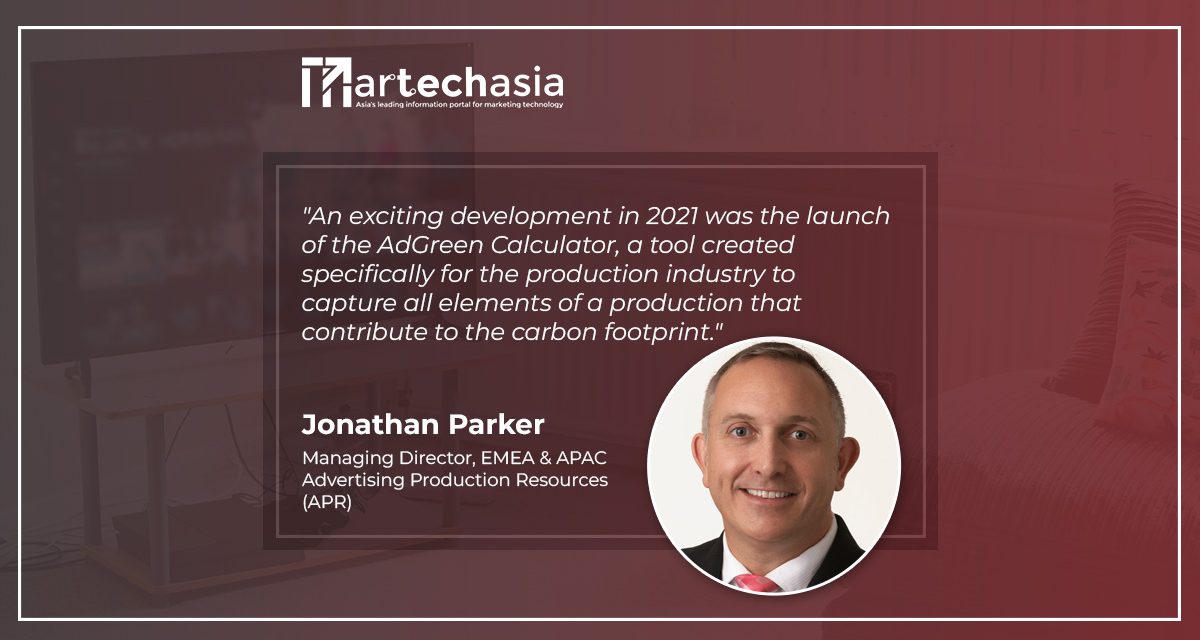Sustainability in advertising and production is a transformative force that is no longer a “nice to have”. Here is why.
With the pandemic shifting operations to remote work, organisations have steered towards greater reliance on digital solutions and preparing for newer, data-driven business models. As the global economy gears toward recovery, the urgency to maintain sustainability – of both business and the environment – has become a business imperative to reduce costs and optimise existing assets.
While global conversations on carbon emissions have largely revolved around policies and industries with immediate environmental impact, the advertising industry’s practices – both on and off the production set – that contribute to significant carbon emissions and wastage, tend to be overlooked.
Each year the global production community produces thousands of tonnes of carbon along with thousands of tons of waste especially on sets. Yet, the same industry is capable of leading unprecedented industrial and societal changes needed to live in a healthy future. Furthermore, this capability extends to the implementation of sustainable practices both in driving behavioural change via subtle messaging on screen, through to improved processes that reduce the carbon footprint of production.
For agencies and brands, this would mean embarking on consistent reviews of production methods, recirculation of creative assets and providing deeper insight into the long-term positives that sustainability brings for consumer loyalty and business.
Brands and agencies have faced challenges starting their sustainable journey. However, there are tangible ways and alternative solutions that will catalyse the reduction of their carbon footprint during content production.
Data-driven transparency
To accurately assess a problem, or a potential issue, in today’s data-driven business world, organizations must look towards gathering the right data to inform them of the next steps.
In a report published last year, Kantar revealed a list of telling figures on the growing awareness of sustainability practices among consumers in Asia: 58% are personally affected by environmental problems; 53% have stopped buying from brands that negatively impact the environment and society and, 63% believe sustainability is the responsibility of the brand.
Significantly, we have found that transparent practices are imperative, given the highly conscientious nature of consumers today. In fact, 80% of citizens across the globe are more willing to choose brands that engage in sustainable practices, and 70% of those people are even willing to pay up to 35% more on average for eco-friendly brands.
An exciting development in 2021 was the launch of the AdGreen Calculator, a tool created specifically for the production industry to capture all elements of a production that contribute to the carbon footprint.
With real time data, brands and agencies are able to see the reduction of their carbon footprint as a result of changes made to the production process, such as reduction in travel or switching to renewables. This, in turn, educates and drives behavioural and operational change within agencies and organisations.
Within the industry, there are initiatives such as Green The Bid in the United States, and AdGreen and AdNetZero in the United Kingdom that have created frameworks for carbon emission measurements and calculators to create a full picture of the carbon emissions produced by the advertising industry.
While these initiatives have increased global participation, and with AdGreen and AdNetZero starting to receive global interest and recognition, there is currently no single repository of consolidated global data on carbon emissions for the advertising industry.
With increased participation and unfiltered contributions from the whole industry, measurements will continue to be refined, and the industry will be able to harness the power of shared data to avoid repeating missteps.
Efficient Operations
As the world went into lockdown in 2020, and social and economic activities came to a standstill, there was a staggering drop of 6.4% in carbon emissions on a global scale. As part of the global decline in carbon emissions, Malaysia, for example, witnessed a 9.7% decrease in carbon emissions during the pandemic. Surprisingly, even if this reduction was sustained, it still wouldn’t be enough to keep us under the 1.5 degree cap required to avoid catastrophic repercussions, and so there is still much work to be done.
With Covid-19 restrictions and lockdowns, the advertising industry has seen how travel and overhead costs shrunk, therefore yielding immediate financial savings, while providing significant reductions in carbon emissions. In other words, brands and agencies have witnessed a key period that has pushed marketers to operate more efficiently.
However, as borders begin to reopen, the decrease we have seen in carbon emissions is likely not going to last. That is precisely why the advertising industry, which traditionally involves extensive traveling, needs to reflect on how it has thus far adapted to the pandemic, and how this adaptability has decreased carbon emissions and, more crucially, how to build on that momentum.
Workarounds like remote video villages, drop kits to people’s homes, and technologies to support virtual production have all meant that we are now able to do so much more without the necessity of multiple people travelling to a remote location. By choosing domestic shooting locations, and splitting teams into on-site and remote functions, the move toward sustainability more than pays for itself.
One of the most exciting developments in advertising content creation has come from the games and broadcast industries; the use of gaming engines and ICVFX/Virtual/Volumetric/LED wall studios to create environments in real time, replacing the need to transport crew, provide logistics support and build costly large scale sets, usually for one-time use only.
A combination of the above alongside increased attention to renewable energy across studios and post-production facilities, will generate an impact that is both meaningful and measurable.
Developing the roadmap to net zero
Efficiency in production time and resources affect the carbon footprint, and it is therefore important for marketers to rethink their entire production ecosystem, all the way from strategising to execution, in order to achieve sustainable practices in production.
Taking cues from best industry practices, the development of a playbook is a useful tool to outline targets and provide guidance as to how creative partners can support the journey to net zero carbon emissions.
In addition, brands can develop a structured, phased approach, starting in Phase 1 with discovery and data collection to set baselines. These baselines create improvement targets for Phase 2, all with the underlying foundation of an agency ‘charter’ to provide practical guidance on what is expected from agency partners on each production. This establishes a road map to net zero in Phase 3.
We have seen that despite the urgency, the reality is that most organisations are required to focus on their direct emissions from Scope 1 and 2. Attention towards third party relationships in Scope 3 in that sense, is still in its nascent stage.
Re-emergence as new pioneers
Over the past year, we have observed how sustainability awareness presentations to our clients and the industry globally creates an epiphany. Once someone has been awakened to reality, they are instantly propelled into action which is an added benefit, and exactly the reaction we are looking for.
Sustainability in advertising and production is a transformative force that is no longer a “nice to have”. As brands rebuild their operations and refine their outlook in the post-pandemic era, it is a must for both agencies and brands to consider how they can strengthen identities, appreciate the environment and build loyal and meaningful relationships with their audience.



















